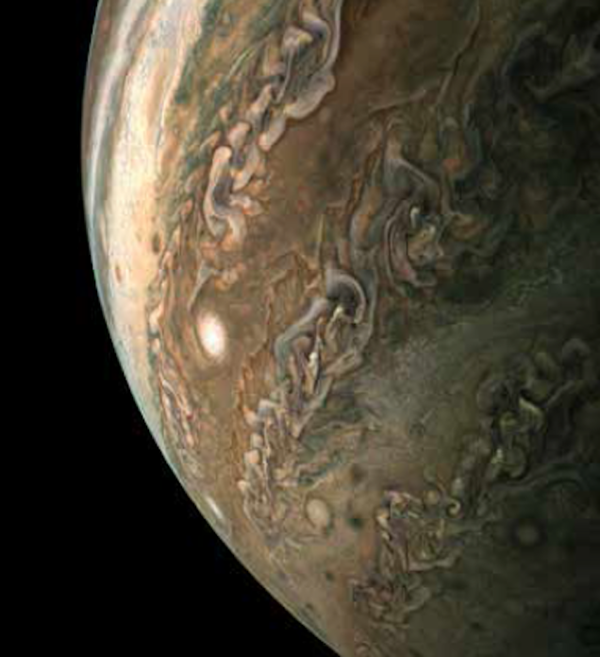Dramatic sweeps of clouds and intricate features make Jupiter look like a whole new planet in this JunoCam image of the planet’s southern hemisphere. JunoCam can image Jupiter at resolutions nearly 10 times that of previous spacecraft, reaching resolutions of 2 miles (3 km) per pixel at closest approach to the planet near Jupiter’s equator, and 31 miles (50 km) per pixel over the poles.
NASA/JPL-Caltech/SwRI/MSSS/Gerald Eichstädt
There are several reasons why the JunoCam images of Jupiter look so different. One of them is the perspective from Juno: The spacecraft is in a polar orbit, so images taken at high latitudes and near the poles are not foreshortened, as they are in Earth-based images (and those from previous spacecraft). That’s why the turbulent regions at high latitudes look so stunning. JunoCam’s images are also at a higher resolution than those taken before.
Another reason is JunoCam’s wide field of view, which spans 58°. So instead of capturing a mere snippet of the planet, we see an entire swath of swirling clouds at high resolution in every image.
Candice Hansen
Senior Scientist, Planetary Science Institute,
and Co-Principal Investigator of JunoCam,
Ivins, Utah










